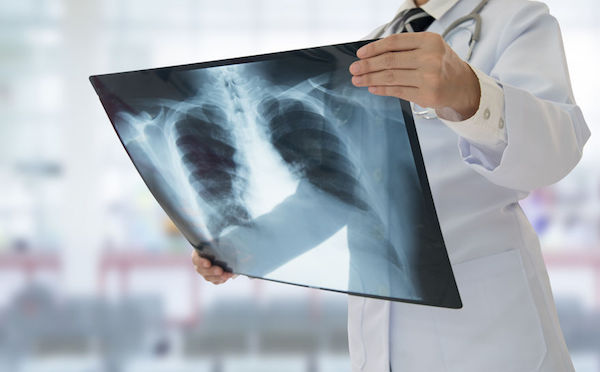Tuberculosis (TB) is a potentially fatal bacterial infection, which most often attacks the lungs (pulmonary TB), but can affect other parts of the body too (extrapulmonary TB).

Tuberculosis causes are known to be various strains of a bacterium type called Mycobacteria, particularly the strain Mycobacterium tuberculosis. While tuberculosis is contagious, the infection can be suppressed in people with healthy immune systems. This is known as latent tuberculosis and it’s symptom-free.
According to the South African National Tuberculosis Association (SANTA), up to 80% of people in South Africa may be infected with tuberculosis bacteria, with most of these infections being latent. Active tuberculosis will show signs of infection.
What are its symptoms?
When the disease is active, tuberculosis symptoms include:
- A prolonged mucous-producing cough (usually more than three weeks). The mucous may be bloody
- Chest pain and shortness of breath
- Loss of appetite and weight loss
- Night sweats
- Fatigue
- Overall feeling of being unwell
- Low-grade fever.
TB affecting other parts of the body will produce other symptoms, depending on the organs involved.
Always discuss any unusual symptoms with your doctor if you have been in close proximity with someone infected with TB or if your immune system has been compromised. SANTA reports that people with HIV are up to 37 times more likely to develop active tuberculosis.
How is it diagnosed?
Because it shares many of its symptoms with other conditions, a tuberculosis diagnosis will require more than just a physical examination from your healthcare provider. One of the tests that may be carried out is a skin test in which a substance called tuberculin PPD is injected just below the skin on the forearm – this is used specifically for children who are unable to produce sputum for testing. A hard red bump developing at the injection site within two to three days indicates that a TB infection is likely.
Chest X-rays, which can reveal changes in the lungs caused by the disease, and additional blood or sputum tests to pick up the TB bacteria can confirm the diagnosis.
What are your treatment options?
Tuberculosis treatment in new-onset tuberculosis cases is usually a six-month combination of various antibiotics to treat the infection and reduce the risk of resistant strains of the disease emerging.
It’s essential to take tuberculosis medication as directed for the prescribed length of time, even if the symptoms do disappear sooner, as not adhering to treatment can lead to the development of drug-resistant, multi-drug resistant (MDR) and extensively drug-resistant (XDR) forms of tuberculosis which don’t respond to the mainstay drugs of TB treatment anymore.
According to SANTA, cure rates of up to 95 percent can be achieved in TB with minimal drug resistance, which then drops to 50 to 70 percent for the MDR type.
Can it be prevented?
Tuberculosis is transmitted via the respiratory fluids of those with an active infection coughing or sneezing, so an important part of tuberculosis prevention is for those with active infections to take precautions to protect others. This includes staying at home until treatment has made them non-contagious, covering their nose and mouth when sneezing and coughing, and always finishing their entire course of prescribed medication.
If you have latent tuberculosis and are at high risk, such as with HIV, a doctor may prescribe antibiotics to prevent it from developing into the active disease.
For more info
South African National Tuberculosis Association (SANTA)
Clicks Health Hub: HIV/AIDS Super Section
IMAGE CREDIT: 123rf.com
